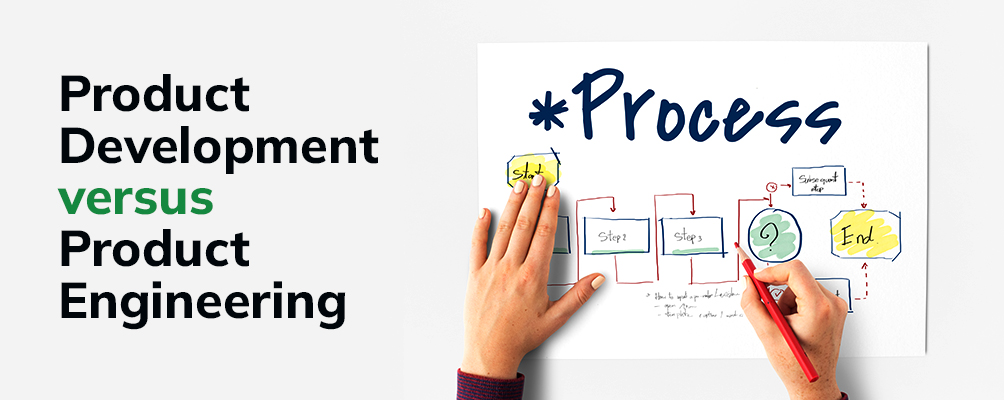
Product development includes ideation, development roadmap, time-bound milestones, designing, marketing, and more. It is a step-by-step process to manifest an idea into a product. Often, product development is misunderstood for product engineering. Wrong terminologies can result in miscommunication and aggravate risks in the development lifecycle. Let’s learn the difference between the two – product development and product engineering.
What is product development?
Product development is the process that begins with discovering a new idea to launching it as a product. It calls for step-by-step planning to avoid imperiling resources. The different phases of product development are:
- Discovery or ideation
There are two ways to conduct product discovery:
Inductive methods – An already existing idea/product is improved here. It involves data collection to find the shortfalls of competitive products and create a new product without those shortfalls.
Deductive discovery – A team introduces an original idea. The solutions must solve a task for its users when nobody else has made such an approach.
- Defining the minimum viable product
A minimum viable product (MVP) must have the core deliverables or features so that it can be rolled out to users for quality feedback. It is created by keeping open discussions with the product development team to define achievable objectives for everyone. The set of steps must be such that it doesn’t require much capital.
- Product designing
A MVP is an optimal solution planned for users. Once you objectively plan your deliverables, it’s time to design the concept. The designers will come in strong here and design the user navigation journey across the product. Infographics and screen images are used to replicate this journey. It will include all the features (and their design) that you plan on having in the product.
- Implementing the design
After designing, the project manager prioritizes product specifications and assigns tasks to developers and engineers. The development runs according to the priority order of specifications, followed by functionality testing.
- Marketing
Marketing must start early in the lifecycle a product so that you can reach maximum people by the product launch. A campaign with a straightforward message keeps the target audience informed about your deliverables. However, refrain from overpromising your audience about the unique features. You may talk about improved features instead. In case there are some entirely new features in your product, you may also consider training before launch.
- Launch
The last (although not the final) step is to release it in the market.
This entire six-phase process is known as product development, which doesn’t stop here, a project manager continually evaluates:
- To keep/improve/remove existing features.
- Additions to improve the product.
- How to reach more audience. Etc.
What is product engineering?
In the above process of product development, steps three and four fall under product engineering. It is the process of manufacturing or developing the product and testing its functionality. Without engineering, an idea cannot come to fruition. Engineers bring an idea on paper to reality. However, engineers can only work when a project head or manager specifies tasks. Therefore, the two concepts are interconnected.
Here’s a quick comparison to look at:
| S.no. | Product Development | Product Engineering |
| 1. | Product development services is the complete process from ideation of product to launch. | Product engineering services includes designing, developing, and testing product features. |
| 2. | Product development takes into account the right target audience, strategies to introduce new features, market the product, grow brand awareness. | Product engineering aims to create better products than the competition/prototypes based on consumer feedback. They also consider consumer preferences. |
| 3. | Product developers can introduce new product features to increase consumer engagement. | Product engineers indulge in creative thinking to make those new features impactful and easy to use. |
| 4. | Product developers prioritize tasks and distribute them to relevant teams to keep the product development going within time and cost constraints. | Product engineers design, implement and test the different features of digital a product to deliver a flawless consumer journey. |
| 5. | Without this the development lifecycle, there will be lack of planning, strategizing, and distribution of tasks. | Without engineering, a concept cannot become a reality. |
Both product development and product engineering are crucial to creating a successful product. However, remember the difference between the two to avoid using the terms interchangeably.
No Comments